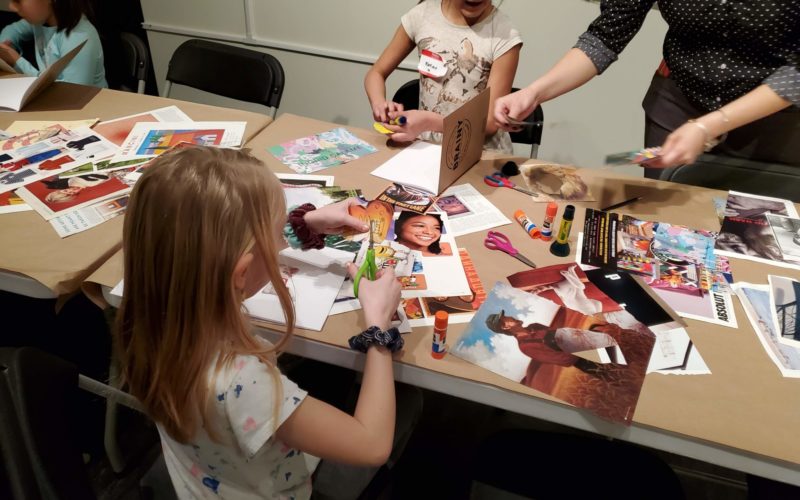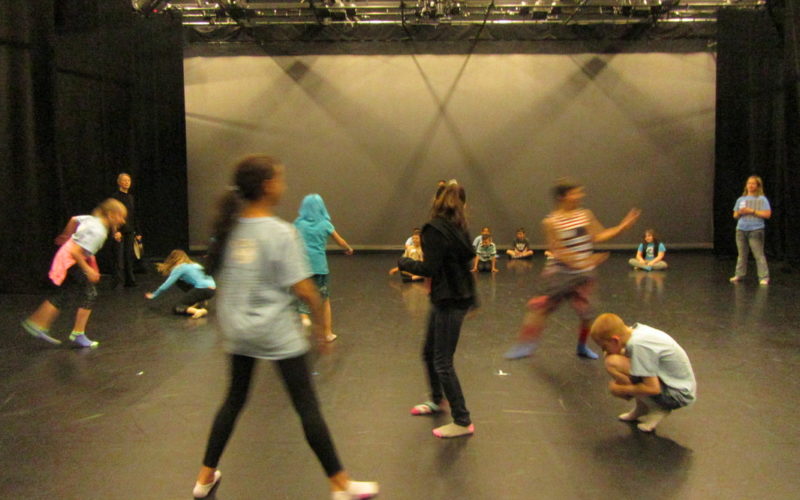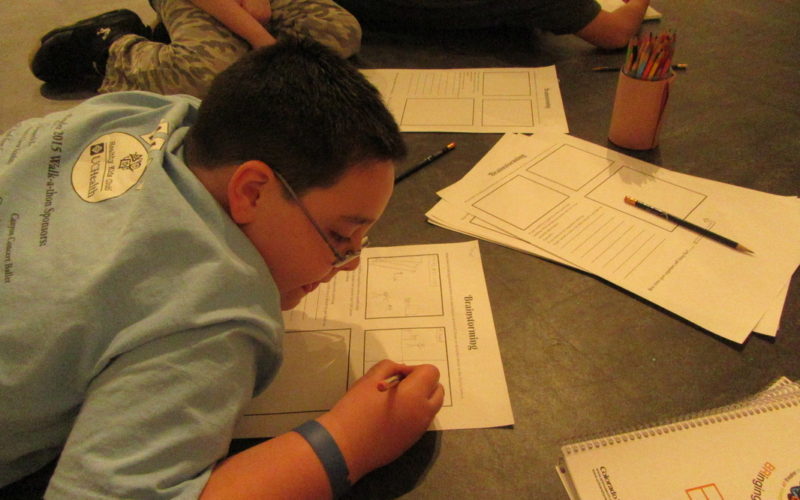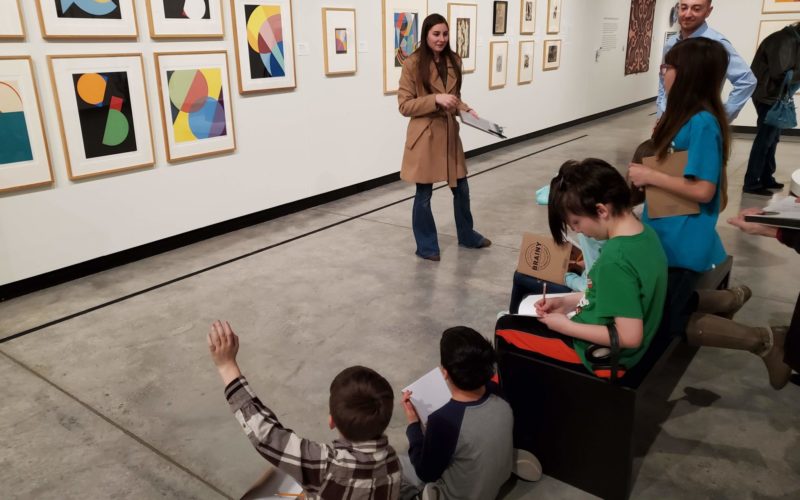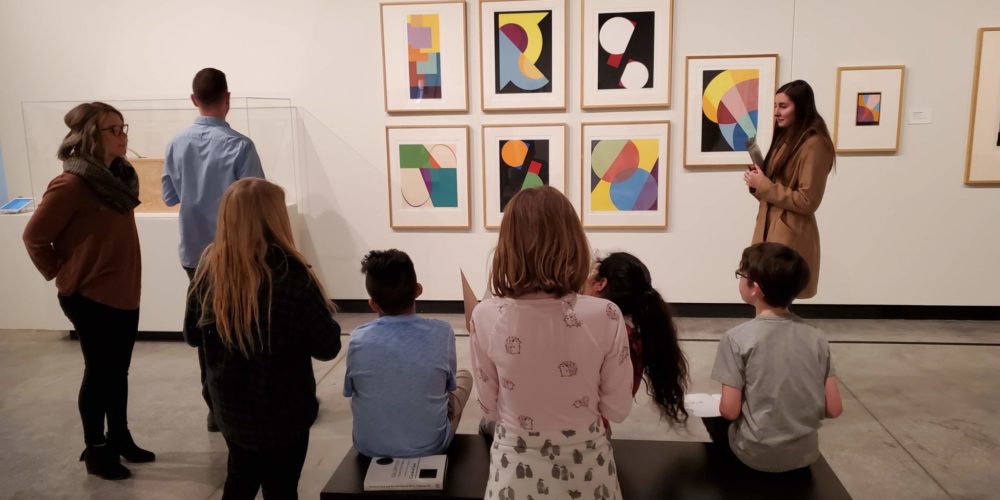
When your work life included regular interactions with Big Bird, Cookie Monster, Oscar the Grouch and other furry Muppet friends, you understand the power of educating youth.
So, when Colorado State University alumnus Jim Vidakovich (B.A. Communications ’69, M.A. Radio and TV Production ’76) heard about the BRAINY (Bringing Arts Integration to Youth) program, he was excited to lend his support – and that of his friends.

“When I heard professors from the College of Liberal Arts talking about some of the great programs for young kids in the college, including the BRAINY program, it reminded me of my 11 years working on Sesame Street,” said Vidakovich, who has put together a long career in television and media strategy. “One of the goals on Sesame Street was to get into the homes of kids who didn’t have the same things as some others, to really connect with underserved communities to help them learn. That’s what BRAINY does.”
BRAINY was founded in 2011 by Patrick Fahey, an associate professor in the college’s Department of Art and Art History, and Linny Frickman, the first director of CSU’s Gregory Allicar Museum of Art. They wanted to give kids from Title I schools – schools where 75 percent of the students come from low-income homes – who might not have access to the arts the opportunity to experience the power of the medium by visiting CSU.
“Linny and I had worked together on other community outreach projects, and when the UCA was built we decided to put together an outreach project that would bring together all of the arts programs at CSU – music, theater, dance and fine arts – and let kids get to experience their power,” Fahey said. “When you connect with students when they are young, that’s when you can really reach them. Title I schools don’t often get to take field trips, so we wanted to put together a program that let those children see CSU and learn that higher education was a real possibility for them in the future.”
Fahey said it was important that visiting students participate in hands-on activities rather than sit and listen to presentations. As a result, the students get to try out different musical instruments, learn dance moves, create works of art and even do a bit of acting.
“We wanted the students to be engaged,” he said. “When they come to the UCA there is this electric feeling in the air – a great excitement. The last thing we want to do is then have them sitting around and hearing about the arts.”
The program’s evolution and growth have been dramatic, with hundreds of fourth-graders in Title I schools in the Poudre and Thompson school districts visiting the UCA throughout the school year. Visiting students get to experience dance and live music in the morning, break for lunch, then immerse themselves in visual art and theater in the afternoon of the day-long visit.
Meanwhile, CSU students in art, music, theatre and dance get to interact with the kids and help them appreciate what they are seeing and hearing.
“The teaching tool and experiential learning is really beneficial for our students interested in getting into education; they get hands-on work in their areas of interest,” said Lynn Boland, director of the UCA’s Gregory Allicar Museum of Art. “The even greater benefit is fulfilling our land-grant mission as a university, serving all members of our community. For most of these young students, it’s their first experience in an art museum or watching a dance program. Watching their faces and hearing them talk about what they are experiencing is very uplifting.”
The more Vidakovich learned about the program the more he wanted to help. The Los Angeles resident committed to providing financial support, then started recruiting members of his CSU fraternity, Phi Kappa Tau, to join him.
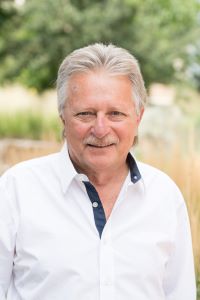
His first recruit was Al Howard (’69, Psychology), a longtime friend who worked in the financial industry in the San Francisco Bay Area. When Howard first heard about BRAINY, he immediately jumped on board with Vidakovich.
“After retiring I needed to find a new relevance, and there were many things about BRAINY that just clicked with me,” Howard said. “I wanted to find something meaningful to me that would be helpful to others, and I really felt like supporting BRAINY was very doable and would make a difference in these kids’ lives.”
The two CSU fraternity brothers then started recruiting other Phi Kappa Tau members, and before long more than 20 were contributing to the cause.
Over the years, participating faculty have heard from dozens of teachers and parents, complimenting CSU on the value of the program for students from low-income homes. And they have witnessed a number of students transformed by the experience.
“A teacher from a Title I school in Loveland told me that one of her students had always been very withdrawn before their BRAINY visit,” Fahey aid. “When they got to back to school the teacher rushed to the principal’s office and said, ‘you have to come see this!’ The little girl was a completely different student. They were amazed at the transformation in such a short period of time, all because she had been exposed to the arts.”
With this gift, the program has solid financial support to help fulfill its mission and Boland can look at expanding the program to include more students.
“I’ll never forget the first day I met Jim,” Boland said. “BRAINY only had about half of the budget. Jim was immediately interested and got himself and others involved.
“Honestly, it’s the sort of thing we dream about in higher education, to have somebody support a program themselves and then bring together their community to join in. Their support has been remarkable.”
With this kind of success, Vidakovich and Howard have already embarked on next year’s fundraising campaign for BRAINY.
You can support their efforts by giving to BRAINY today. To make a gift in to the BRAINY program, please visit advancing.colostate.edu/BRAINY.
Goals of BRAINY
- introduce students to the visual and performing arts
- demonstrate the role the arts play in our community and cultures
- demonstrate that the arts can be part of academic and lifelong pursuits
- expose students to a university campus and post-secondary educational opportunities
